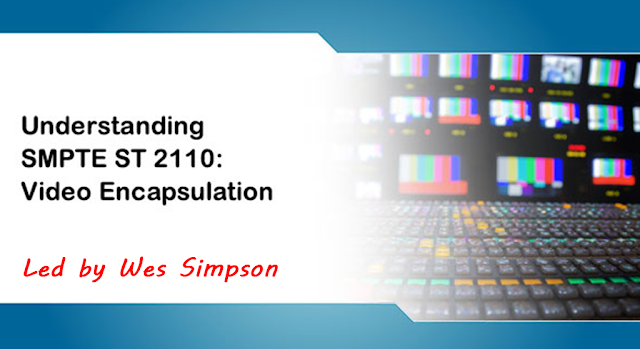Continuing the Virtual course on understating SMPTE 2110 Virtual Course.
Here is my note for Module 2, discussing SMPTE ST 2110-20
SMPTE ST 2110-20 focuses on uncompressed video only. Live TV production mainly uses uncompressed video as it is void of the complexities and delays associated with encoding and decoding found in compressed videos.
Video encapsulation process in SMPTE ST 2110-20
SMPTE ST 2110-20 defines sample rows; these are used to create Sample Row Data (SRD). SRD is made up of pixels from an active sample array, divided into different samples depending on the colour space and sample system of the video.
RFC 4175 - RTP Payload Format for Uncompressed Video which is used in the encapsulation of uncompressed video in SMPTE ST 2110-20 mandates the use of Pixel group (Pgroup). Pgroup is a mechanism where pixels sharing the same samples are transported together.
Two types of RTP payload packing is supported in SMPTE ST 2110. General Packing Mode (GPM) and Block Packing Mode (BPM).
General packing mode packs SRDs which contains multiple integers of PGroups into an RTP payload. see Figure
Block packing mode which offers compatibility for the ASPEN specification, packs multiple 180 octets MPEG2 TS packets into an RTP Payload.
SMPTE ST 2110 supports three sources for RTP timestamp generation.
Timestamp created at image capture.
Timestamp created at the alignment point of an SDI to IP converter
and Timestamp created at the Transmission Time of a Playout server.
These three sources cover most scenarios in a live production environment.
Other resources
https://www.tvtechnology.com/opinions/smpte-st-211020-pass-the-pixels-pleasehttps://tools.ietf.org/html/rfc4175




Post a Comment